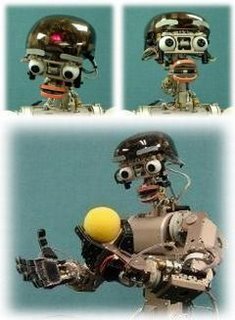Taiwan Selects Standard Robot Software
Taiwan's Industrial Technology Research Institute, ITRI, has annonced that they have chosen Evolution Robotics Sofware Platform,ESRP, for a standard software kit for robot development in Taiwan.
The software development kit will be offered by ITRI to help standardize robot development in Taiwan and help them to get ahead of rapid developments coming from other countries. They expect the market for robots to be in the hundreds of billions of dollars within ten years and they want to make sure that Taiwan stays up with the trend.
"We believe this coordinated approach using our SDK and the ERSP architecture will lead to much more rapid innovation of new technologies, faster time to market for new products, and overall, a stronger competitive position for Taiwan in robotics," said Mr. Chan An Pao of ITRI.
Evolution Robotics is a California based company that provides OEM support for robot software development. In the past they have announced close partnerships with other high profile robot projects. The new home telepresence robot from Bandai, NetTansor, uses Evolution's software.
Evolution has also announced partnerships with robot toymaker WowWee and Korea's URC developer Yujin Robotics. They have also announced that they will be working with Sharper Image on a new vacuum robot.

ERSP provides the basic functioning software for robots as well as the ability to integrate decisionmaking, navigation, vision and custom behaviors.
I can't help but notice that this is not Microsoft Robotics Studio. It appears that there would be no need for the MS Robotics Studio with this software. ERSP runs with MS windows and Visual Studio .NET or Linux.
Evolution, so far, has chosen a very different plan for marketing their software. While MS gives theirs away free for now, ESRP starts in the US $7500 range for educational-use-only kit.
If I had as much money as Microsoft I might consider investing in or owning a company like Evolution Robotics.
Evolution Robotics
The software development kit will be offered by ITRI to help standardize robot development in Taiwan and help them to get ahead of rapid developments coming from other countries. They expect the market for robots to be in the hundreds of billions of dollars within ten years and they want to make sure that Taiwan stays up with the trend.
"We believe this coordinated approach using our SDK and the ERSP architecture will lead to much more rapid innovation of new technologies, faster time to market for new products, and overall, a stronger competitive position for Taiwan in robotics," said Mr. Chan An Pao of ITRI.
Evolution Robotics is a California based company that provides OEM support for robot software development. In the past they have announced close partnerships with other high profile robot projects. The new home telepresence robot from Bandai, NetTansor, uses Evolution's software.
Evolution has also announced partnerships with robot toymaker WowWee and Korea's URC developer Yujin Robotics. They have also announced that they will be working with Sharper Image on a new vacuum robot.

ERSP provides the basic functioning software for robots as well as the ability to integrate decisionmaking, navigation, vision and custom behaviors.
I can't help but notice that this is not Microsoft Robotics Studio. It appears that there would be no need for the MS Robotics Studio with this software. ERSP runs with MS windows and Visual Studio .NET or Linux.
Evolution, so far, has chosen a very different plan for marketing their software. While MS gives theirs away free for now, ESRP starts in the US $7500 range for educational-use-only kit.
If I had as much money as Microsoft I might consider investing in or owning a company like Evolution Robotics.
Evolution Robotics




